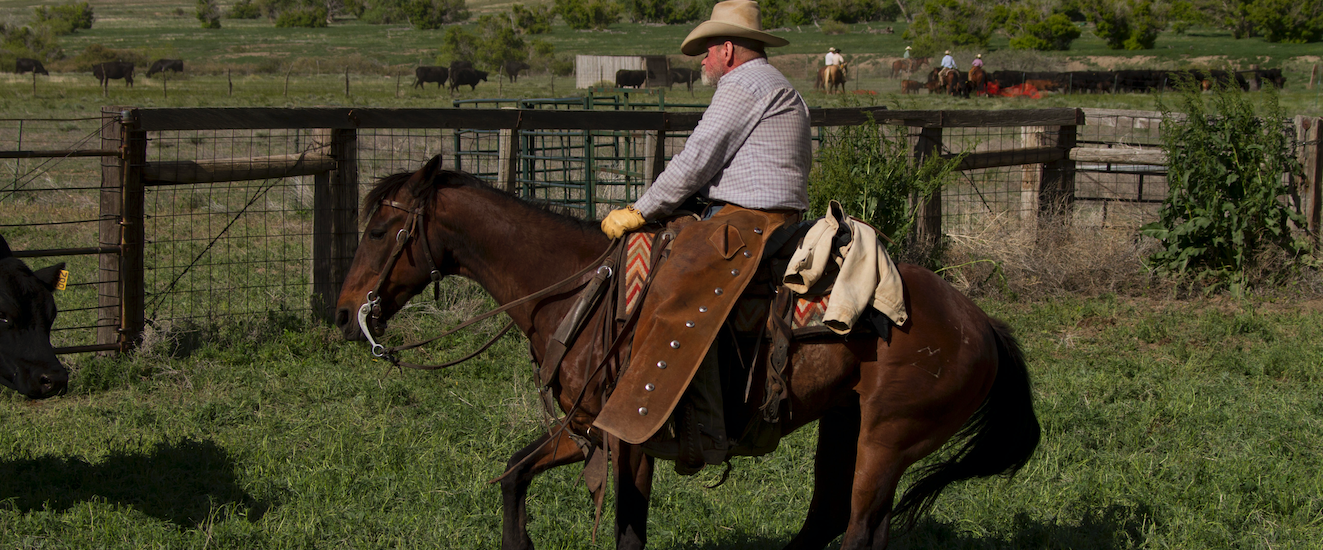A Win for Ranching
Photo: Gary Bellenfant sorting dries at a Colorado branding on one of his ranch horses.
Perhaps the biggest reason that the ranch rodeo movement began (25 years ago with the WRCA, in fact), and has grown in the subsequent quarter century, is because many of the other performance horse and cowboy contests drifted so far away from their ranch roots.
While it’s easy to appreciate professional rodeo, reined cow horse, and cutting contests, very few of the participants in those events make their living turning solar energy into delicious protein. And of course, it’s hard to ranch for a living and be competitive in the arena. Nonetheless, for anyone who works on their horses, these performance events can seem a little out-of-balance.
I recently had the chance to spend a day with the 2019 National Cutting Horse Futurity Open Champion Gary Bellenfant and the horse he trained for Burt Bull, Metallic Rey Mink.
I talked to Gary and his assistant Gabriel Densley about what was different about this horse. Both said he was easy to be around and when it came to training, he just “got it” quicker than most. I should pause here and mention that Gary’s training techniques run contrary to the rank-and-file cutting horse trainers of the day. He doesn’t nit-pick a horse (his words) and, most notably for this topic, he uses them.
Gary trains out of a ranch south of Abilene, Texas. It’s a big place with lots of cattle coming through. He and Gabby throw in with rancher Rodney Schumann when he’s prowling for sick cattle, cutting out puny cattle for treatment in the corrals, and doctoring wheat pasture calves. And they use the horses they have in training for ranch work.
In fact, between the second go and the semifinal round of the NCHA Futurity, a fence between two different pastures containing upwards of 100 head of cattle each went down and the cattle mixed. Gary rode Metallic Rey Mink to straighten it out. While most Open semifinalists were feverishly working their horses on flags and in perfectly groomed arenas, Gary was tuning his horse in the pasture.
I asked him why this kind of work helped—rather than very focused, intentional training in the practice pen. Paraphrasing, he explained that with the more exposure to a cow, the better the horse could understand one. After all, cutting is contested on the horse’s ability to read and react to a cow.
It reminded me of a story a friend once told about Spanish fighting bulls. These bulls are bred to charge and gore humans. Yet, on the ranch my friend visited, it is strictly forbidden to expose these bulls to humans until their match. What they found was if the bulls could see people, they could begin to understand them, learn, and in essence become too dangerous for the bullfighters. Logically, the more a fighting bull could see of a human, the more dominant he could be.
The same goes for the horse, the more exposure one can have to a cow, the better they understand and can dominate that cow in the cutting pen. Gary gave his colt the opportunity to see thousands of cattle in hundreds of situations. And he learned. He wasn’t being nit-picked by Gary. Instead, he was being forced to think after Gary helped him understand the goal. Obviously the method worked for Metallic Rey Mink and Gary Bellenfant. And it’s sure nice to see ranching play a major role in a major performance horse win.

